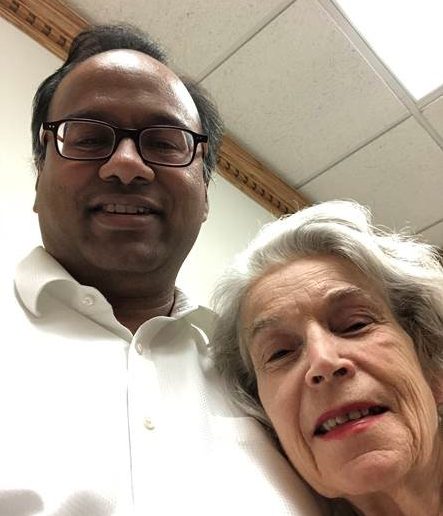Are you one of the 15 million Americans affected by this condition?
Darleene Bonnema was diagnosed with neovascular Age-related Macular Degeneration (nAMD also known as “wet AMD”) when she was 79-years-old, a condition that could potentially lead to blindness and other hurdles that would threaten her quality of life.
In June, Darleene was one of the first patients treated at Advocate Christ Medical Center in Oak Lawn, Ill., as part of “A Prospective Study of Episcleral Brachytherapy for the Treatment of Neovascular Age-related Macular Degeneration” clinical trial.
This national trial is investigating the use of a novel ophthalmic brachytherapy device to treat nAMD. Dr. Rama Jager, an ophthalmologist and retina surgeon at Advocate Christ and principal investigator for the clinical trial, is one of only two physicians in the world to use the new radiation device from Salutaris Medical Devices, Inc. as a novel treatment for nAMD, the leading cause of blindness in the U.S.
Darleene’s procedure was completed without complication, and she says life is only improving for her.
“I’m so thankful to have been able to participate in this trial and have the care team that I did,” says Darleene. “There was nothing to the procedure really – it was quick and painless. Not only do I feel my eyesight has gotten clearer, but there is a lot less discomfort with this treatment. Plus, I may only have to have injections a few times a year instead of every month, which is also a lot more affordable for me.”
The device applies a small amount of radiation to the macula (the back part of the eye) using a minimally invasive procedure. The patient receives local anesthetic, the surgeon makes a small incision in the conjunctiva and the device is guided through the incision behind the eye to target the macula, where radiation is applied for a prescribed amount of time. Following the treatment, the device is completely removed, and no further radiation remains in the patient. The device is used in an outpatient setting under local anesthesia, and the entire procedure time is approximately 15 minutes.
“We are happy to be able to offer our patients a potentially new way of treating wet age-related macular degeneration,” said Dr. Jager. “This device has the possibility to be rewarding for our patients and improve their overall quality of life.”
More than 15 million Americans have age-related macular degeneration, and many of them need expensive treatment every month to help delay the effects of nAMD. This new ophthalmic brachytherapy device is being investigated as a way to significantly reduce the need for these monthly intravitreal injections.
Dr. Jager adds, “Not only could this device help our current patients, but it has the potential to help people with wet macular degeneration throughout the world who don’t always have access to these monthly intravitreal injection treatments, which can often be quite expensive.”
The study plans on enrolling 20 patients with wet AMD who are currently receiving eye injections. The study includes one study treatment and 12 months of follow-up eye exams. There is no cost for the study treatment, and participants will continue with their regular care for wet AMD. To find out if you may qualify, please call (708) 687-2222. For more information about the study, visit www.ClinicalTrials.gov, study NCT02988895.




















